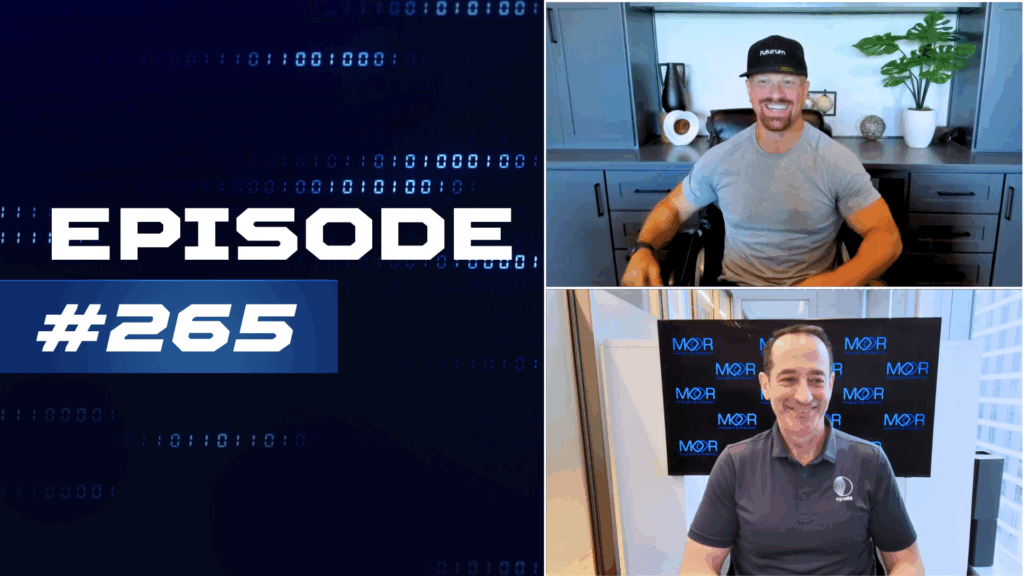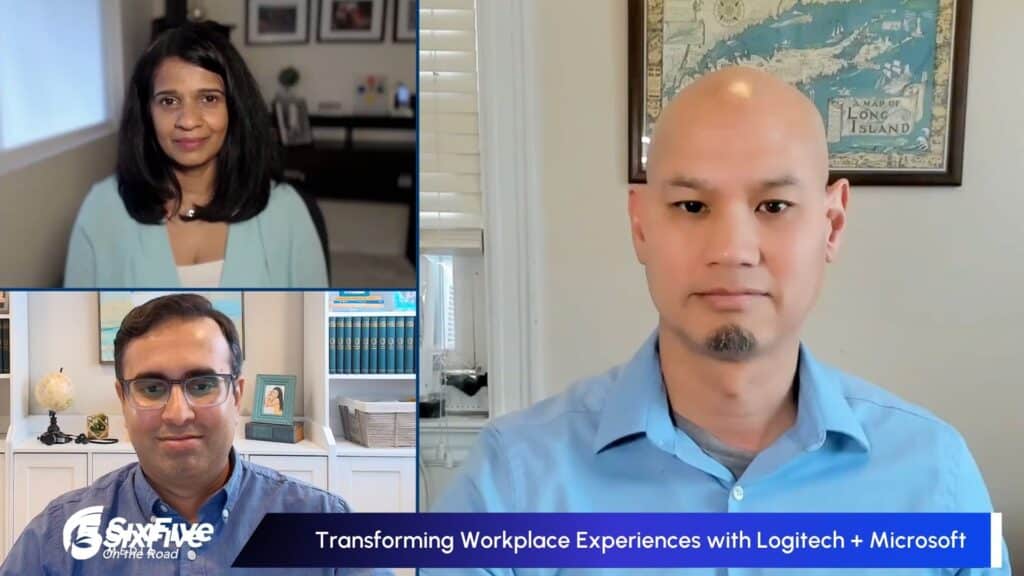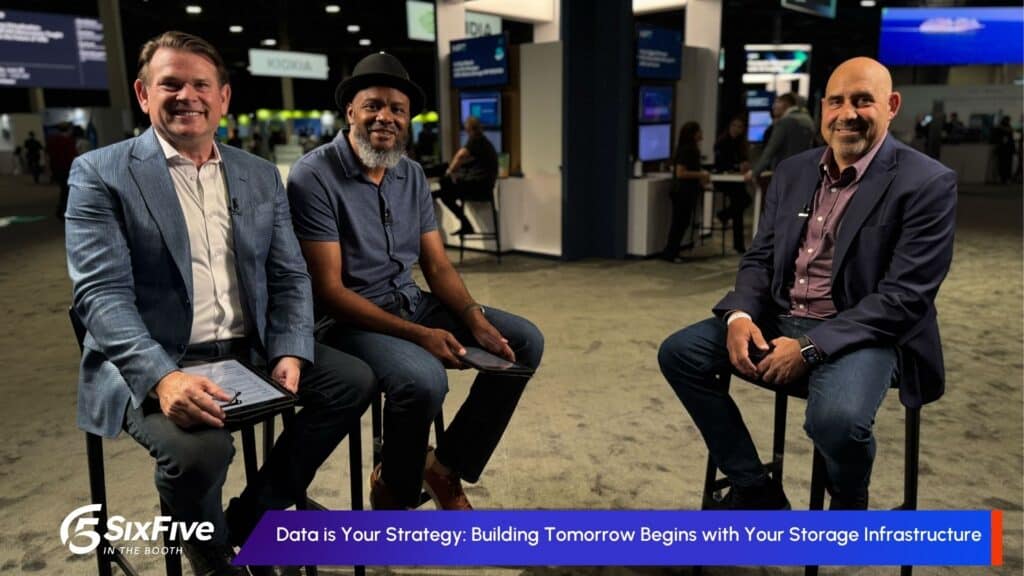On this episode of the Six Five On The Road at Computex Taipei hosts Olivier Blanchard and Anshel Sag are joined by Qualcomm‘s Rahul Patel, Group GM, Connectivity, Broadband and Networking, at Qualcomm Technologies, Inc., for a conversation on the pivotal role of advanced connectivity solutions like 5G and Wi-Fi 7 in enhancing AI PC experiences. This insightful discussion delves into how Qualcomm is shaping the future of PC technology through innovative connectivity.
Their discussion covers:
- The significance of PC connectivity in the age of AI and how Qualcomm is positioned within this space.
- The benefits of integrating 5G and Wi-Fi 7 into PCs for both enterprise users and consumers, moving beyond conventional Wi-Fi connections.
- New connectivity enhancements Qualcomm is bringing to the PC market to elevate user experiences.
- A broad look at how Qualcomm views connectivity among various devices, including PCs, mobile devices, XR, hearables, and wearables.
- The announcement of a new Wi-Fi SoC aimed at battery-powered IoT devices and the importance of micro-power Wi-Fi.
Learn more at Qualcomm.
Watch the video below, and be sure to subscribe to our YouTube channel, so you never miss an episode.
Or listen to the audio here:
Disclaimer: The Six Five Webcast is for information and entertainment purposes only. Over the course of this webcast, we may talk about companies that are publicly traded and we may even reference that fact and their equity share price, but please do not take anything that we say as a recommendation about what you should do with your investment dollars. We are not investment advisors and we ask that you do not treat us as such.
Transcript:
Anshel Sag: Welcome back to The Six Five On The Road here at Computex. I’m joined by Olivier Blanchard and Qualcomm’s Group GM of Connectivity, Broadband, and Networking, Rahul Patel. Thanks very much for joining us.
Rahul Patel: Thank you, Anshel, for having me. How are you doing?
Anshel Sag: Doing great. It’s a little bit warm but it’s Taiwan so it’s that time of year.
Rahul Patel: Beautiful Taiwan.
Anshel Sag: I was going to start the discussion off by asking about… We’ve talked about PC connectivity for quite some time and as a discussion has shifted towards NPUs and all these other capabilities, it’s kind of drifted away from connectivity, so I’d love to hear about how you think about connectivity in this new AI PC era.
Rahul Patel: Excellent question. I think the PC is reinventing itself, as Qualcomm says, this is a rebirth of the PC. Having said that, connectivity was definitely way ahead in its planning and execution of products. We saw that in our mobile products about a year back when we announced our Wi-Fi 7 capabilities, and as a result of not only Wi-Fi 7 but being 40% more efficient on battery life and bringing high band simultaneous capabilities into Wi-Fi 7, yielding five gigabits per second connectivity throughput. Those were the elements that ultimately were going to be very useful for this new generation PC platform versus what we had been using in the past.
As with AI, latency matters. Five gigabits is what is needed on this platform. As with AI, there’s tremendous amount of compute, battery life matters, and this 40% improvement in battery life consumption from Wi-Fi point of view also matters. And so, those are the two key elements on which the connectivity product line evolved for the new generation PC.
Olivier Blanchard: So speaking of that, I think one of the questions I want to ask you is how moving from traditional Wi-Fi to Wi-Fi 7 and 5G connectivity on these new PCs, these copilot plus PCs specifically, is going to bring real world advantages to commercial users and also users in the consumer segments, but specifically also how those are going to enable and move forward a lot of the new AI powered use cases?
Rahul Patel: Well, I think what you have seen in the first generation of AI PCs is that you’re seeing Wi-Fi 7 capability. We at Mobile World Congress earlier announced our Fast Connect 7900 capability. What that is doing is also bringing AI in the radio implementation itself, and you will see that in the next set of platforms that will launch in the next generation of PCs. What that is all about is managing the radio bandwidth based on the applications that are running on the platform. It is also about managing the latency based on what the application needs may be, and also modulating for performance speeds and feeds based on the battery life consumption.
So that level of AI, or I would say network management capability in wireless radio, is going to be in our next generation of connectivity products. And so, as you can see, AI is going to be not only on the NPU but other parts of the platform as well. It’s very important that connectivity does not slow down the experience that’s needed to be delivered on AI platform. Great.
Anshel Sag: Great. And we’ve talked a lot about wifi already but I’d love to hear your thoughts on how additional connectivity solutions that you can bring to the PC space might change the way users experience their PCs.
Rahul Patel: Excellent question again. I think, so what we announced at Mobile Congress was FastConnect 7900. FastConnect 7900 is probably the world’s only radio capable of integrating dual band Wi-Fi, also supporting six gigahertz. Wherever in the world that six gigahertz capability is there. Dual Mac implementation of Bluetooth, so you got two Bluetooth radios firing at the same time for multiple use cases. And then also, UWB. And so, it’s all monolithic single dye implementation, and you can see a lot more radio frequency capabilities are coming into a single implementation from Qualcomm. Other than that, we are also bringing 5G modules to our platforms, so these platforms are going to be 5G capable and the product needs to support 5G.
And so, if I operate at a higher level of abstraction you are seeing anywhere from two gigahertz to multiple gigahertz of frequency spectrum covered by radio capabilities in these platforms, and that is the level of complexity that Qualcomm is delivering in this platform. And it’s not about packing just radios but also ensuring the interoperability. The orchestration of various frequency bands taking place in the platform is in a way that does not interfere with each other. The coexistence dimension across these spectrums is essential from experience point of view, and so there’s a lot more from a technology and execution point of view that goes into these platforms to deliver that AI platform experience.
Olivier Blanchard: That makes sense. So I don’t want to put you on the spot and reveal any secrets about roadmaps, but obviously Snapdragon X Elites and just the X platform period is obviously part of the Snapdragon ecosystem. It’s not just a PC play it also works with other Snapdragon platforms. And so, I’m thinking about interoperability and new use cases for users who use their mobile devices, their PCs, XR. Can you talk a little bit about how you’re thinking about next gen use cases in this new era of Snapdragon X powered PCs?
Rahul Patel: Well, I think it is very essential that “my mom” is able to use some of these devices flawlessly. Experiences that would involve authentication using a phone or a phone being in proximity of a PC. As a result, PC unlocks for my mom. I think those are the experiences that we’ll see come about, along with our products and our software capabilities. Also, I think understanding the entire ecosystem, what’s happening in the wireless medium, dynamically adjusting the performance requirements, latency requirements accordingly is going to be key. Interoperability between your Snapdragon mobile platform, Snapdragon X Elite PC platform, Snapdragon XR platform, a Snapdragon drive platform, which is the automotive platform, all of those aspects have to work seamlessly and I think we are uniquely positioned to serve all these platforms from connectivity point of view to deliver that experience of interoperability and ease of use.
Olivier Blanchard: Yeah, it seems like a good value proposition to move ahead with.
Rahul Patel: It does not hurt Qualcomm, being a leader in Wi-Fi access points and Wi-Fi gateways as well. And so, that’s definitely the centerpiece for the networking experience and that’s where we also come and play in a nice way, and that helps the overall delivery of experience.
Anshel Sag: Thanks again, Rahul, for joining us, and please stay tuned for the rest of our coverage at Computex. We’ll be recording more sessions and don’t forget to follow us on social and continue following us as we do more sessions throughout the show.
Author Information
Olivier Blanchard is Research Director, Intelligent Devices. He covers edge semiconductors and intelligent AI-capable devices for Futurum. In addition to having co-authored several books about digital transformation and AI with Futurum Group CEO Daniel Newman, Blanchard brings considerable experience demystifying new and emerging technologies, advising clients on how best to future-proof their organizations, and helping maximize the positive impacts of technology disruption while mitigating their potentially negative effects. Follow his extended analysis on X and LinkedIn.










